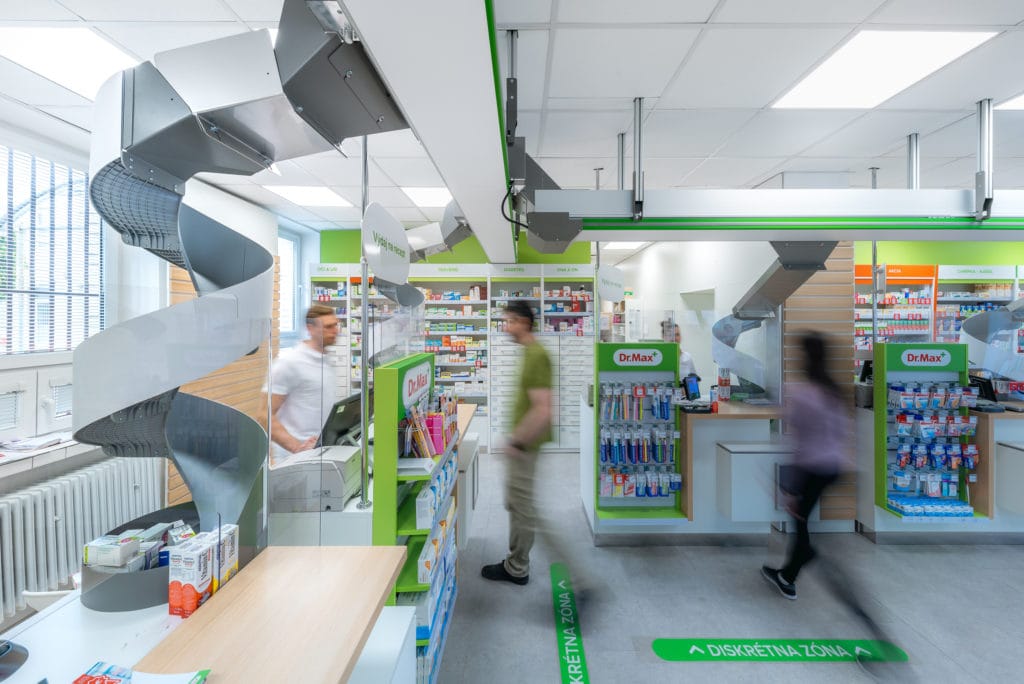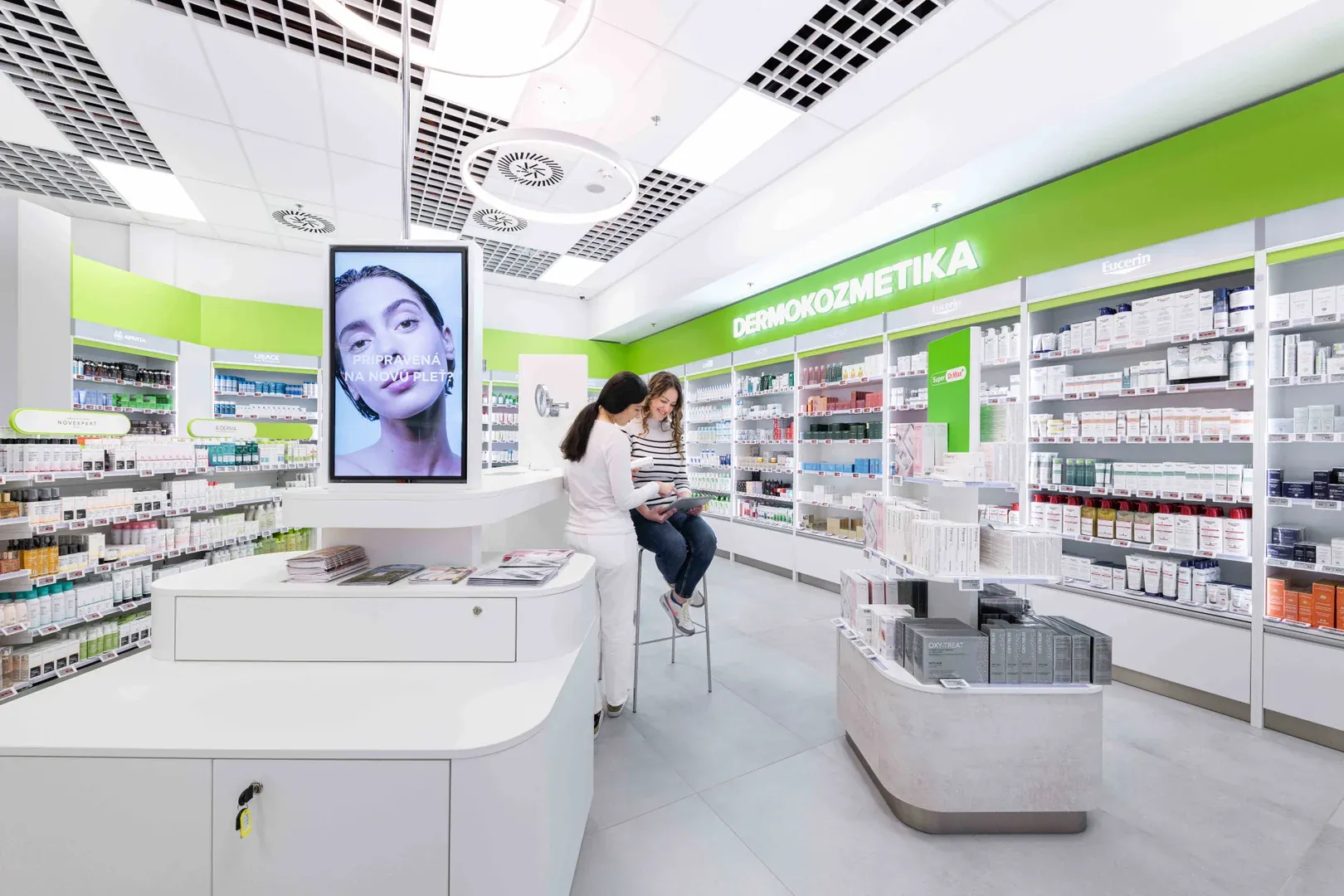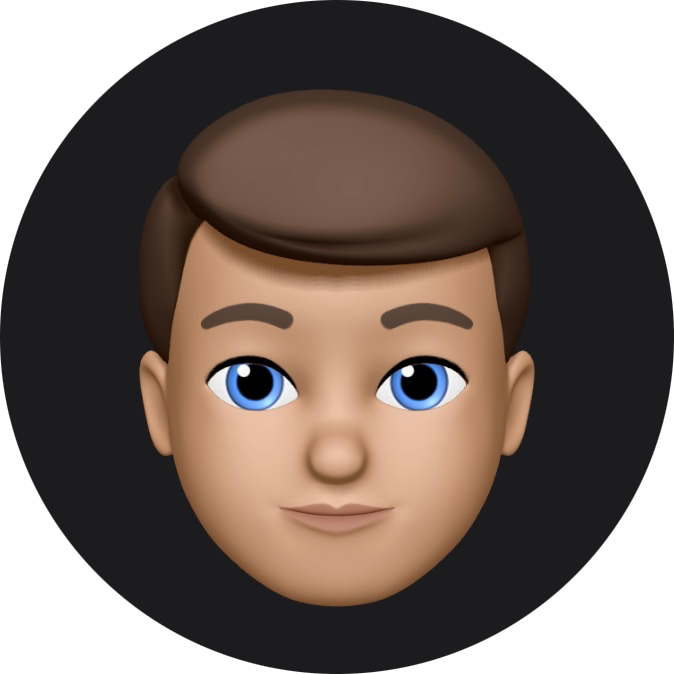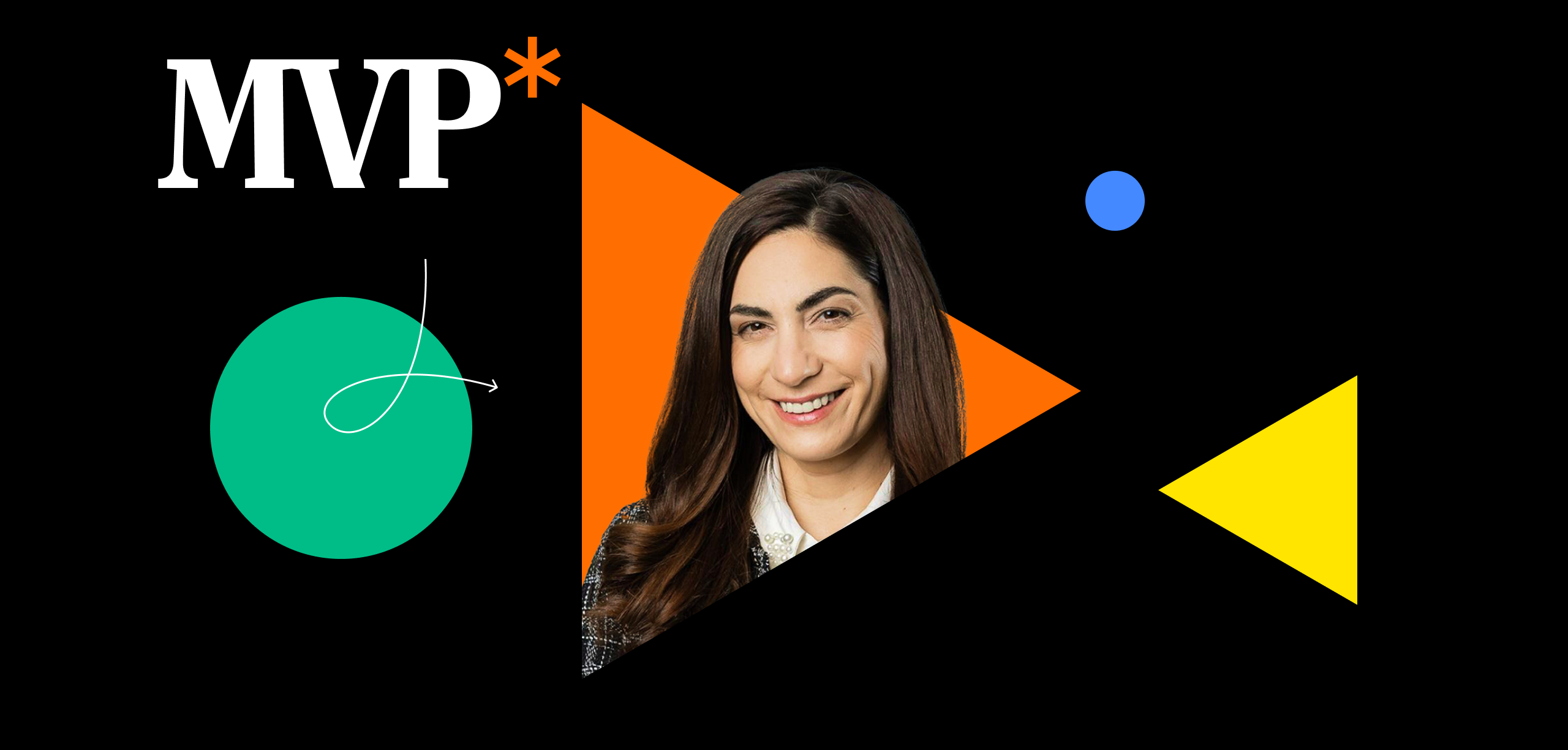Dr. Max has the largest network of stores in Slovakia, but it is also known for bringing innovations. How do they manage the satisfaction of 1.5 million customers, how do they use data and what are their plans for the future?
Today's guest on the Minimum Viable Podcast is Jana Kutlíková, who is in charge of marketing and customer experience at Dr. Max.
Do you know your organization's CX maturity level? Find out in few seconds by answering these 6 questions.
Minimum Viable Podcast is brought to you by the CX design studio Lighting Beetle*. It's usually recorded in the Slovak language, however, you can read an English transcription of this episode below. For more English content, including case studies and handouts, visit our Journal.
To start, a little bit broadly, how big is Dr. Max and how many customers does it serve?
So overall Dr. Max consists of online and offline. Within offline, it's our pharmacies. Currently we have 421 and we can say that we are in every district, which we are very proud of. Then within online we have of course coverage within the whole of Slovakia in terms of delivery. In terms of the number of pharmacies, we are the largest in Slovakia.
How many customers do you serve?
We can measure this by the number of receipts. And then of course we measure how many customers we have in our loyalty program. An active customer for us is a customer who buys within twenty-four months and currently we are above the number of one and a half million. Customer care is a motto for us, we try to be number one in care and always bring something more to our patients and customers.
I hear a little bit in that that one of your goals is to cover the whole country, to have dominance in the market.
Yes, it is a long-term goal. Of course, the competition is still there and is big, but for us it's still like bringing something extra. For us it's availability, of course price and always bringing something extra in care. Currently, the pharmacy is the most accessible place of healthcare.
So when I'm sick and I have a runny nose, where do I go, I go to the pharmacy, only then do I visit the doctor. So this is how we approach it, that we are like the first entry point in case of illness.
What types of customers do you perceive, how do you categorize them?
We categorize online customers on the one hand. Secondly, there are our customers, whom we divide into 2 largest segments, namely prescription customers, then there are ordinary passers-by and last but not least, those who are dealing with some non-acute problem - they need nose drops, vitamins and so on. So we also have our pharmacies divided. We have pharmacies that you see on the street, then there are shopping pharmacies and then there are pharmacies that are in hospitals or clinics, so there is also a different group of patients there.
Do you also divide these customers socio-demographically, that you have them precisely named, that this is some kind of profile of his? Or are they rather shopping modes, that these people simply move from one mode to another?
When we talk about pure age, pensioners are more sensitive to the price. So we try to adapt the offer to them. But as for over-the-counter customers, we of course sort them into customer groups based on their shopping behavior, value and basket composition.
When the NPS is below 70, we really actively work with it
How do you know how to put together the product portfolio at a specific store?
So those outpatient pharmacies are more prescribed, there their stock availability is also adapted based on what doctors are in the given hospital. But on the other hand, when our pharmacies are in the shopping mall, we try to have a wider offer there and there, for example, we also place dermocosmetics and there the portfolio is larger. So we monitor the purchases of each pharmacy and we are also enabled by such a system that you can reserve medicines online with us.
This means that the pharmacist will issue it to you within an hour. There you can see which pharmacy has it and if there is a greater interest in some medicine, we will pre-stock this pharmacy.
What data about customers do you process? How do you know they are satisfied? What are your pillars based on which you make action plans?
As part of our customers, we have the Dr. Max Club. Whoever is a member of the club, of course, receives benefits and we "interview" these members after each purchase through a satisfaction questionnaire. Based on this purchase, we ask him about the NPS, whether he was satisfied with the purchase and whether he would actually recommend this pharmacy to his friends. And then there are things like whether he was satisfied with the pharmacist's approach, whether the pharmacy had the product that she needed and so on and so forth. So we have it divided into larger sections.
I personally don't think that a pharmacy, for example, is the place where we would now place tablets. The goal is, of course, to convert as many patients as possible who are not members to become members so that we have data about them. Then we subsequently work more with the phase of those "detractors". We then communicate with those detectors through our call center.
What else can you do with the data other than calling detractors?
Each pharmacy has its own NPS and we are dedicated to improving it. When there is long-term dissatisfaction in some pharmacy, then of course we work with the regional director to continue working with that pharmacy and it is not just some kind of fluctuation. When the NPS is below 70, we really actively work with it to make it as good as possible. We talked a lot about the data and I'm interested in how important this data is for Dr. Max's top management. It's definitely the topic of the week and I can say that we have it in our annual goals.
We have a very nice example from the beginning of last year, when we were changing our loyalty club, while canceling the previous loyalty points. And by forcing those patients to apply points, it happened to us that we sent those x new customers to the pharmacy to apply those points so that they would not lose them. There, such a thing happened that those customers who shopped online were suddenly dissatisfied with the approach of that pharmacy. At that time, the NPS of pharmacies dropped and it turned out that it was because of online customers who were not used to waiting in line, they had to talk to the pharmacist...
Dr. Max Club has 1.5 million customers. What is the mechanics of how you got so many customers into the loyalty program?
Members have better prices, especially for medicines. Another benefit is our private label, where there are 2+1 promotions only with a loyalty card. They can also participate in competitions. However, the main motivator is the price of the product. Being a member brings benefits and based on the feedback data we can offer customers a tailor-made offer.
For example, if someone regularly buys vitamin C, we will send them information about the discount. The classics are birthday and name day discounts. At the end of the year, we send a summary email about the amount saved, which evokes a good feeling in people.
Is the main primary benefit for you customer data or do you track something else as well?
We definitely monitor commercial parameters. Then definitely also within the measurement of market share. I'm not saying completely, but we can look at it this way. You are making quite significant innovations at Dr. Max, at least that's how it seems to me. I will mention the new Super Dr. Max concept, you do sampling directly at the pharmacy, you have robotization...
Why are you actually doing these innovations?
To put it simply, these things you mentioned give us something extra for patients and secondly, time to devote to them. For example, the robotization of expedition work in our pharmacies. Our ROWA robot saves the pharmacist a trip to and from the warehouse, so he can take care of the customer. Secondly, there are examinations, again something extra.
When you go to the pharmacy, you can measure, for example, CRP and only then go to the doctor if the CRP is elevated. The service we would like to have is vaccination. It will also relieve doctors, because it is something we can do at those pharmacies. So when you go to pick up the vaccine, you can get vaccinated right away with us.

Is this more a matter of increasing revenue for you or is it more a matter of customer care?
We don't charge much for the services. It's really like offering the patient something extra.
We talked about these innovations, how do these innovations help you win in the competitive market?
In loyalty. We know how long the waiting times are for those doctors and when I decide that I'm going to solve some problem, I can solve it in one place and thus build loyalty. And on the other hand, we then have data about the customer, so we can always offer him something extra.
What are the responses to these extra services?
We managed to do the CRP, but the other tests still need time. It is a long-term journey and strategy that the pharmacy provides something extra.
I would like to go back to Super Dr. Max, because it is quite an exceptional concept. Try to tell us what it actually is.
Super Dr. Max is our pilot project of the pharmacy of the future. On an area of 715 square meters, we offer more than 6,000 products from various categories - in addition to medicines and nutritional supplements, there is dermocosmetics, children's products, healthy food, products for animals, electronics, sports aids and much, much more. It was also a test of what the customer and patient are willing to buy in that pharmacy, what wide portfolio can they go to.
We are still trying, rotating the products, looking at the customer behavior. There are consultation zones, we offer body composition analysis with the InBody device. Furthermore, what is there is an additional service of dermo-advice, where we do an analysis of the skin and hair. So it's a comprehensive care of my well-being, that you not only sell me a product, but also give me some analysis of how I'm doing.
What are the first reactions from customers? How do you evaluate Super Dr. Max internally now?
For us, it was a test of the assortment, what we learn and what we don't learn. And I can still say that we are still trying. It was quite a challenge for us to grasp and sell it in terms of marketing, that we have such a thing at all, because customers in Slovakia are not used to it at all, which is the opposite abroad. In the future, we will then open something between a classic pharmacy and Super Dr. Max.

What is the primary mode of purchase? Who is the e-shop for?
For everyone. Of course. But what works very well for us and I can say that it is growing are precisely those reservations at pharmacies, where it is a classic omni channel approach. This means I order online and have it in the pharmacy within an hour. Furthermore, we launched Marketplace in May of last year. There we are still learning what is and what is not, how to do it. We also offer reservations for prescription drugs.
Are you also thinking about expanding services within digital?
We have the Dr. Max consultation, where you can ask the pharmacist a question. It's not instant, but a real pharmacist answers you. Even our articles, which are all on the web, are written by experts. We would never let some copywriter or AI write it.
Do you plan to continue to perhaps bring the pharmacist closer, have a faster response, bring the online space closer to the offline one?
My personal goal is to have a pharmacy in the Metaverse. Today, the legislation will not let go, but definitely yes. We also try to involve pharmacists on maternity leave, and this is not possible in the offline space. So this is how we try to motivate the staff to stay with us, even when they go on maternity leave. We would definitely prefer to have it online 24/7, but currently, in terms of capacity, this is the maximum we can give to patients.
What is your biggest challenge that you would like to solve somehow? We call it a design challenge, i.e. a complex problem that stands before you and you would like to get through it.
As I mentioned, to have a pharmacy in the Metaverse. So for that you need a dose of better legislation. If the legislation wasn't so discouraging, that one could really get carried away and make some kind of pharmacy of the millennium, where everything would be grasped in a different way, that would be very nice in terms of what you nicely called design character and so that our pharmacies really offer something extra, so that patients go there for those services.
So that we are the first choice, that I don't just go for some of my vitamins and for some of my prescriptions, but that I go there because I want advice. I want care and it's also a more pleasant environment than in the doctor's waiting room. Raise the awareness of the pharmacy to a higher level as well. It's more than just a pharmacy, but it's somewhere where that comprehensive care is provided for our patients.
Minimum Viable Podcast is brought to you every two months by the design studio Lighting Beetle*, which focuses on creating an exceptional customer experience.
In Minimum Viable Podcast, we use relatable language to dive into customer experience design. We invite unique guests to chat about how Customer Experience influences business success. A special thanks to Mojmír Procházka for his production support.
We are looking forward to every listen, follow, share, and suggestion for improvement. You can send us your tips for interesting personalities with whom we can talk about design to podcast@lbstudio.sk.
Enjoy!


